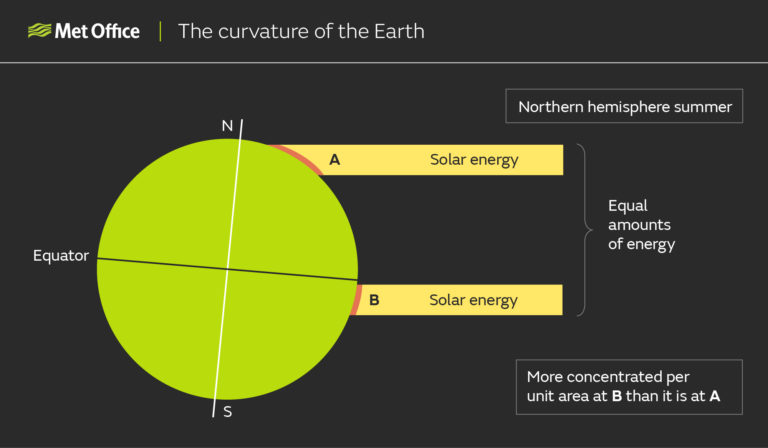
Reach your personal and professional goals
Unlock access to hundreds of expert online courses and degrees from top universities and educators to gain accredited qualifications and professional CV-building certificates.
Join over 18 million learners to launch, switch or build upon your career, all at your own pace, across a wide range of topic areas.

 The curvature of the Earth results in spreading out of solar energy towards the poles and a concentration near the equator
The curvature of the Earth results in spreading out of solar energy towards the poles and a concentration near the equator
 The curvature of the Earth results in solar energy having a larger amount of atmosphere to travel through to reach the Earth’s surface near the poles than towards the equator
The curvature of the Earth results in solar energy having a larger amount of atmosphere to travel through to reach the Earth’s surface near the poles than towards the equator
 The spin of the Earth results in day and night, and the tilt of the axis gives us our seasons
The spin of the Earth results in day and night, and the tilt of the axis gives us our seasons







